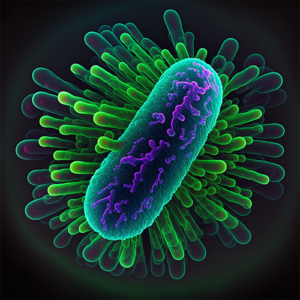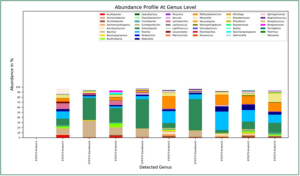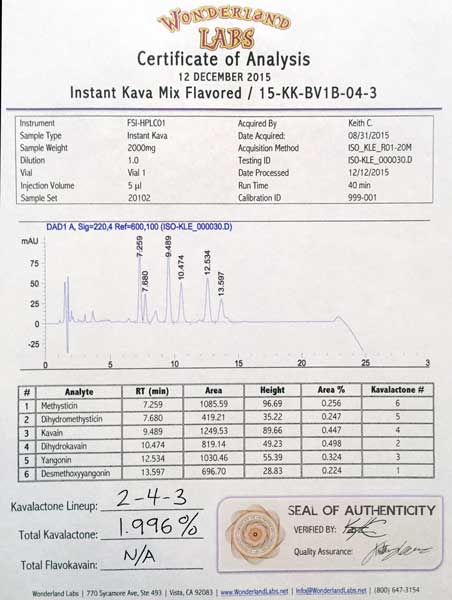 INTRODUCTION
INTRODUCTIONAre you planning to consume kratom powder or liquid?
Empower yourself and find out a few key factors you may want to consider:
– The lab tests that help guarantee any Kratom product you purchase is safe for consumption
– The most common bacteria, pathogens, and metals typically found in Kratom
– The most common adulterants used in Kratom
REQUIRED FDA FULL PANEL TESTING
Bacteria such as Salmonella and E. coli are common in kratom, and their presence can pose a significant risk to human health. Salmonella, in particular, has been associated with several outbreaks of illness related to kratom consumption. Yeast and mold are also common contaminants in kratom, and their presence can cause respiratory problems, skin irritation, and other health issues.
To ensure the safety of kratom products for consumption, it is crucial to conduct microbial testing of the product. This testing can help identify the presence of harmful microorganisms. It can also ensure the product meets the standard limits for total aerobic microbial count, total yeast and mold count, and specific pathogenic bacteria.
So, let’s discuss the required lab tests that the FDA requires for any consumable dietary supplement:
Microbial testing: Microbial testing is essential to identify the presence of harmful microorganisms such as bacteria, yeast, and mold. The presence of these microorganisms can cause infections and other health issues. From over a decade of testing Kratom in various forms, we have found that FALSE E. COLI POSITIVES are common. Actual E. coli contamination is vastly lower.
We have also found Salmonella in only about 5% of the thousands of samples we’ve tested. Staph is the least common pathogen in Kratom. We have only found it in less than 1% of al-samples we have tested.
The standard limits for microbial and pathogens tests are as follows:
– Total aerobic microbial count: not more than 10^5 CFU/g
– Total yeast and mold count: not more than 10^4 CFU/g
– Absence of pathogenic bacteria such as Salmonella and E. coli
Heavy metal testing: Heavy metal testing is necessary to identify the presence of harmful metals such as lead, mercury, arsenic and cadmium. These metals can be toxic to the body and can cause various health issues, such as damage to the nervous system, kidneys, and liver.
The recommended standard limits for heavy metal testing are as follows:
– Arsenic: note more than 0.5 ppm
– Lead: not more than 0.5 ppm
– Mercury: not more than 0.1 ppm
– Cadmium: not more than 0.5 ppm
Alkaloid content testing: Alkaloid testing is necessary to identify the presence of active compounds in kratom such as mitragynine and 7-hydroxymitragynine.
Average alkaloid content for both Mitragynine and 7OH is as follows:
– Mitragynine: 0.8% – 1.8%, with an average of 1.0-1.2%
– 7-hydroxymitragynine: 0.03% – 0.05% is typical in raw material
Kratom is known for its two main alkaloids, including mitragynine and 7-hydroxymitragynine. These are responsible for its main psychoactive effects. We have done extensive testing on the other 3 key alkaloids in Kratom. We know that the “entourage Effect” plays a key role in determining the effects of Cannabis strains. Many believe that the differing combinations of the main 5 alkaloids in Kratom may also produce a similar “entourage effect”.
We have not found this to be true, but we are not saying it doesn’t exist.

KRATOM CONTAMINATION
The presence of microorganisms in kratom is due to various factors. These include the environment in which it is grown, the harvesting and processing methods, and storage conditions. Kratom grows in humid and warm climates, providing an optimal environment for microbial growth. Additionally, improper handling and storage of kratom after harvesting can lead to contamination.
The following are the most common reasons for kratom contamination:
Growing conditions: Kratom is typically grown in warm and humid environments, providing an optimal environment for microbial growth. If the conditions in which kratom is grown are not properly managed, it can lead to contamination with bacteria, yeast, and mold.
Harvesting and processing methods: The harvesting and processing of kratom are critical steps that can affect its quality and safety. Improper harvesting and processing methods, such as using unclean equipment, can lead to contamination with microorganisms.
Storage conditions: To maintain its quality and safety, after harvesting and processing, kratom, it needs to be properly stored. If stored in a warm and humid environment, it can lead to contamination with bacteria, yeast, and mold. Additionally, exposure to moisture can lead to the growth of mold and other harmful microorganisms.
Cross-contamination: Cross-contamination can occur when kratom comes into contact with other contaminated materials during processing or storage. For example, if the equipment used to process kratom is not properly cleaned, it can lead to cross-contamination with microorganisms.
Heavy metal contamination: Kratom can also be contaminated with heavy metals such as lead, cadmium, and mercury. All can be toxic to human health. Heavy metal contamination can occur due to the soil in which kratom is grown or from using contaminated water during processing. We have also seen a large increase in Nickel in some Kratom raw material appearing sometime around 2020, and up to mid-2022.
Many have attributed this to machinery (like hammer mills) used in countries that Kratom is harvested, not being made of stainless steel. As these non-FDA compliant machines are used, that nickel can slough off over time, contaminating the raw material without anyone noticing.
ADULTERANTS
Regarding adulterants, the US Food and Drug Administration (FDA) has identified several adulterants in kratom products. Unscrupulous manufacturers add adulterants to kratom products to increase the potency or enhance the effects of the products. These adulterants can pose a significant risk to human health and may cause serious adverse effects.
Here are some of the most commonly identified adulterants our lab has found in kratom products:
O-desmethyltramadol (ODT): ODT is a potent opioid drug that is found in some kratom products. ODT is a synthetic opioid that can cause severe respiratory depression, seizures, and death.
Hydrocodone: Hydrocodone is a prescription pain medication that is found in some kratom products. Hydrocodone is a potent opioid that can cause respiratory depression and death.
Sildenafil: Sildenafil is a prescription medication used to treat erectile dysfunction that is found in some kratom products. Sildenafil can interact with nitrates. Nitrates exist in medications used to treat heart disease, and can cause a significant drop in blood pressure.
Tianeptine: Tianeptine is a prescription antidepressant that is found in some kratom products. Tianeptine is a potent opioid that can cause respiratory depression, seizures, and death.
Phenibut: Phenibut is a central nervous system depressant that is found in some kratom products. Phenibut can cause sedation, dizziness, and withdrawal symptoms.
To ensure the safety of kratom products for consumption, it is important to purchase products from reputable manufacturers. Reputable manufacturers include those who follow good manufacturing practices (cGMP) and regularly test their products for purity and contaminants. It’s so essential to be aware of the potential risks associated with kratom use. Please do your research or consult with a trusted healthcare professional before using kratom as a supplement or for any purposes.
STANDARD DOSAGES
Lastly, just as a general reference point, common dosages for kratom are as follows:
Raw Powder: 2-8 grams per serving
Kratom Liquids: 8-20 mg/ml
We test a wide variety of Kratom products, but have seen a massive surge in liquid extracts in 2022 and 2023. Most of the Kratom shots we test seem to be within a very narrow range. On the low end, we see about 7-8mg/mL. On the high end, we see as much as 20mg/mL. Beyond that, for a finished Kratom product, have yet to see higher than that.
The highest concentration extract we’ve tested so far was 80mg/mL. Concentrations can get as high as 500mg/mL, but we have yet to see that happen.
IN CONCLUSION
Please comment below if you have any questions or additions to the information presented above. We’re always looking to increase our knowledge of this plant, no matter how much we test it. In general, we have found that most suppliers do take care in harvesting, processing, and storing their Kratom. There are always exceptions, and it’s those exceptions that can cause significant harm to the consumer.
WHY CERTIFICATES OF ANALYSIS?

A Certificate of Analysis will confirm that any material is safe for consumption according to FDA guidelines. It doesn’t mean it’s legal for consumption, it just means that if the tested material were to be consumed, it would not contain any of the common pathogens that are most-often and most-likley to be found in foods and/or dietary supplements.
CONTACT US
1341 Distribution Way, Ste 16, Vista, CA 92081
Email: info@wonderland-labs.com
Phone: (800) 647-3154
Call us TOLL FREE
GET A NO-OBLIGATION QUOTE | OUR FAQ’s
OPERATING HOURS: 8-4, Monday – Friday, PT

